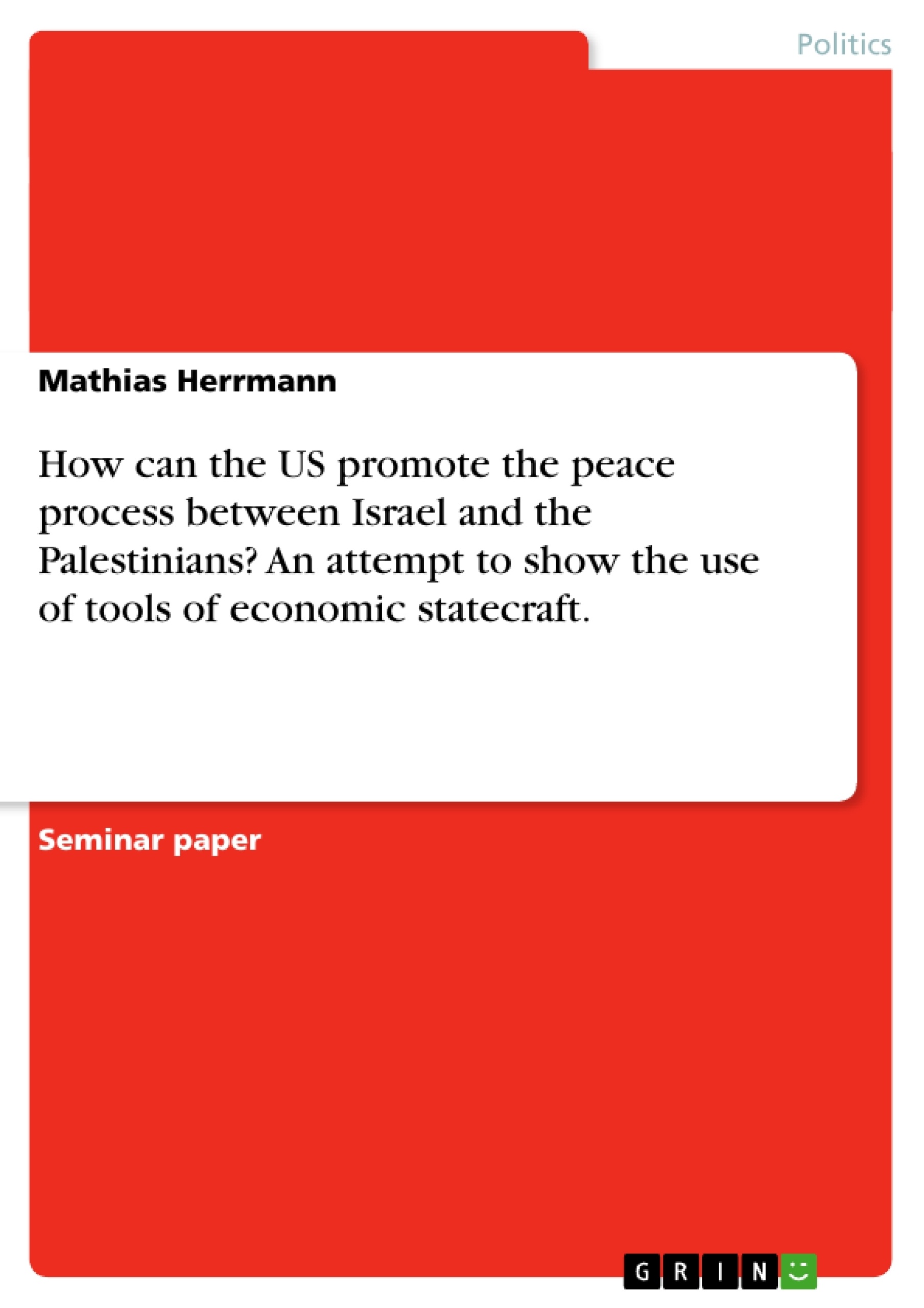There is no other place in the world that is so conflict-ridden as the region between the Mediterranean Sea and the Persian Gulf. Since the foundation of Israel in 1949 hostility tremendously increased and made a small regional conflict become one of the major issues in international politics.
Particularly interesting is the involvement of the US in this conflict and its motivation to do so. Different interests have to be balanced, on the one hand economic interests in the oil flow from the Arab Gulf states and on the other hand the support of Israel as the only real ally to the US in that “sea of authoritarian regimes”, as one author puts it.
After the terrorist attacks in September 2001 the region has attracted much more attention by US politicians than ever before. The administration of George Bush jr. developed the concept of spreading peace and democracy in the Middle East in response to the terrorist attacks. Of special importance is the negotiation of a settlement of the Israeli-Palestininan conflict. Only if a lasting and, in the eyes of the Arab states, just peace is reached, will the US find support for its Middle East policy among the other countries of the region.
Reaching this aim means carefully exerting coercion to the conflict parties, but also offering incentives to them. Economic statecraft as a form of foreign policy is particularly important in this case.
Inhaltsverzeichnis (Table of Contents)
- Introduction
- Defining the subject
- Theoretical approach to economic statecraft
- Economic Statecraft
- Positive Sanctions
- Negative Sanctions
- Interdependence in the US-Israeli relationship
- Assymetrical interdependence
- Economic and military interdependence
- Economic linkage
- Military linkage
- Political and ideological interdependence
- The impact of sanctions in the peace process
- Negative sanctions
- Positive sanctions
- Combination of positive and negative sanctions
- Conclusions
- Literature
- Zusammenfassung / Abstract
Zielsetzung und Themenschwerpunkte (Objectives and Key Themes)
This paper aims to analyze the utilization of economic statecraft by the US towards Israel in promoting the Israeli-Palestinian peace process. The focus is on showcasing how positive and negative sanctions can impact Israel's role in the peace negotiations.
- The theoretical framework of economic statecraft and its tools, particularly positive and negative sanctions.
- The concept of asymmetrical interdependence in the US-Israeli relationship.
- The multifaceted aspects of interdependence between the US and Israel, encompassing economic, military, and political dimensions.
- The potential impact of both positive and negative sanctions on Israel's stance within the peace process.
- A case study examining the influence of sanctions on the Israeli-Palestinian peace negotiations since the early 1990s.
Zusammenfassung der Kapitel (Chapter Summaries)
The introduction sets the scene by outlining the complexities of the Israeli-Palestinian conflict and the US's involvement. The paper focuses on exploring the potential of economic statecraft as a means of influencing the peace process.
Chapter 2 delves into the theoretical framework of economic statecraft, clarifying the definitions of key terms like "economic statecraft", "positive sanctions", and "negative sanctions". This chapter examines the various aspects and applications of these tools.
Chapter 3 focuses on the intricate relationship between the US and Israel, analyzing the concept of asymmetrical interdependence and its manifestations in economic, military, and political spheres.
Chapter 4 explores the potential impact of both positive and negative sanctions on Israel's role in the peace process, examining historical examples and analyzing the efficacy of these tools in achieving peace.
Schlüsselwörter (Keywords)
The paper primarily focuses on economic statecraft, positive and negative sanctions, asymmetrical interdependence, US-Israeli relations, Israeli-Palestinian peace process, and the impact of economic incentives on political outcomes. This analysis highlights the complex interplay of economic and political factors in international relations and conflict resolution, particularly in the context of the Israeli-Palestinian conflict.
- Citation du texte
- Mathias Herrmann (Auteur), 2005, How can the US promote the peace process between Israel and the Palestinians? An attempt to show the use of tools of economic statecraft., Munich, GRIN Verlag, https://www.grin.com/document/39203



